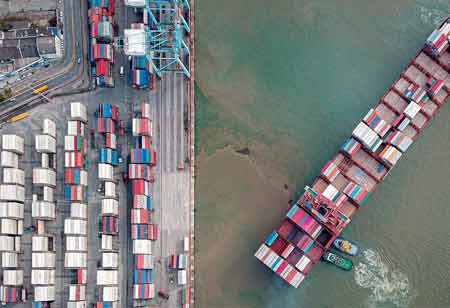THANK YOU FOR SUBSCRIBING
THANK YOU FOR SUBSCRIBING

By
Logistics Transportation Review | Friday, March 21, 2025
Stay ahead of the industry with exclusive feature stories on the top companies, expert insights and the latest news delivered straight to your inbox. Subscribe today.
Packaging, storage, transportation, and monitoring are essential cold chain components.
Fremont, CA: Cold chain logistics refers to the process of processing, storing, and shipping perishable commodities in temperature-controlled environments. It is crucial to ensure that food, medications, and chemicals are safe and effective from their place of origin. Also, ensuring that these products remain in good condition until they arrive at their final destination is recommended.
Cold chain logistics is crucial for shipping and logistics. It maintains temperature-sensitive commodities that are safe and fresh by maintaining consistent temperatures throughout the supply chain. It prevents spoiling, degradation, and health concerns associated with inappropriate storage or transportation.
Businesses that understand and apply the fundamental principles of cold chain logistics may ensure that their products remain safe and effective across the supply chain. Temperature control is crucial for numerous industries, particularly those that deal with perishable goods.
Key components of a cold chain
Packaging: Packaging is vital to protect products from temperature fluctuations in cold chain logistics. People employ various materials and technologies to insulate and protect goods. Insulated boxes, dry ice, and gel packs are popular materials for storing products at the proper temperature.
Advanced packaging methods, such as vacuum insulation panels and phase change materials, contribute to temperature stability over extended periods of time. These technologies ensure that commodities are safe during transit and storage.
Storage: Proper storage cold chain solutions are essential for keeping product temperatures stable in warehouses or holding areas. They design refrigerated warehouses and cold rooms to ensure continuous temperature regulation.
Products are kept within the designated temperature ranges thanks to sophisticated refrigeration systems and temperature sensors. Consistent maintenance and monitoring of cold chain storage areas prevent temperature fluctuations. These fluctuations could impact the product's quality.
Transport: Transporting temperature-sensitive products necessitates particular methods and equipment to keep them within the proper temperature range. Refrigerated vehicles, ships, and airplanes are frequently utilized in cold chain logistics. Refrigeration units and temperature monitoring systems are installed in these vehicles to keep them in good condition while en route. Proper handling and loading techniques are also required to avoid temperature changes and ensure the safety of the products.
Monitoring: Monitoring technologies are essential in cold chain logistics because they track the temperature and conditions of products throughout the supply chain. Devices such as IoT sensors and RFID tags provide real-time temperature, humidity, and other information.
This information aids in the detection of any issues during storage or transportation, allowing for speedy solutions. Constant monitoring ensures that products maintain the appropriate temperatures while being safe and high-quality.
I agree We use cookies on this website to enhance your user experience. By clicking any link on this page you are giving your consent for us to set cookies. More info





